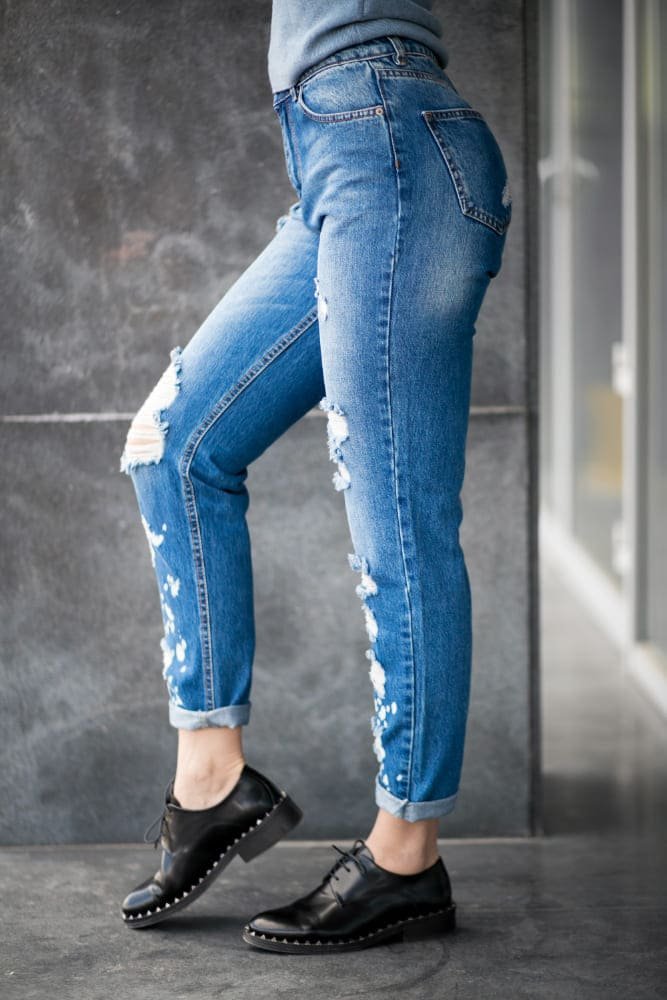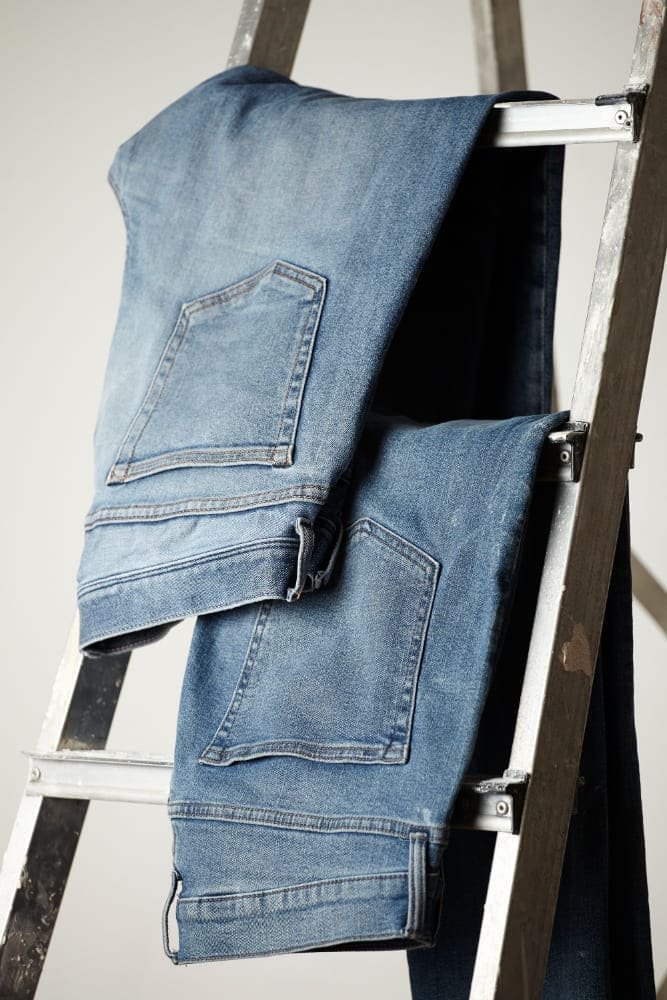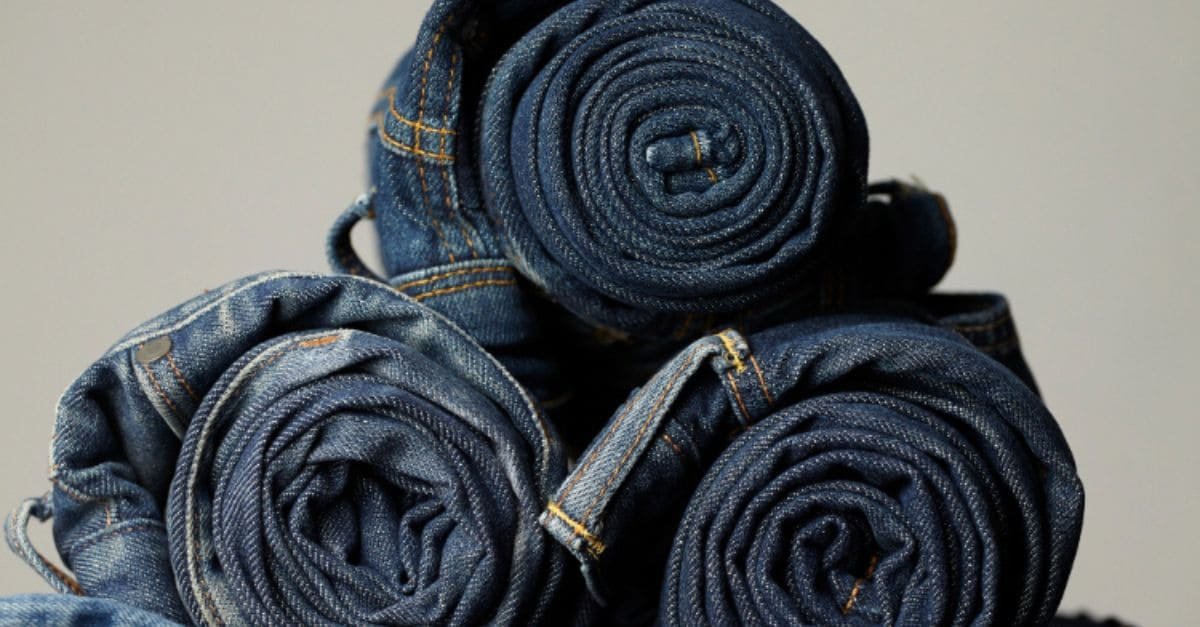Inside Article
Start a Denim Jeans Line
Whether stepping into the vibrant world of fashion entrepreneurship or looking to expand your portfolio into the enduring domain of denim, starting your own jeans line can feel like venturing into an industry where creativity meets robust demand.
Denim is a timeless fabric and an ever-evolving trendsetter, gracing the wardrobes of generations past, present, and future. In this guide crafted by Mega Sports Apparel’s authority in fashion innovation, we will steer you through the intricate threads of what it takes to spin your denim empire.
Denim is more than just a fabric; it’s a canvas that reflects personal style, a testament to individuality. With its universal appeal and penchant for adaptation across various fashion styles, starting your denim jeans line is not only a business move but an exquisite art form.Ready to sew the seeds of your denim dream? This guide will unravel the meticulous steps from fabric to fashion.
Crafting the Denim Journey with Mega Sports Apparel
Before you take the plunge into the world of denim, it’s vital to understand the essence of the fabric and what it stands for. Mega Sports Apparel, a titan in the fashion manufacturing realm, has propelled dozens of entrepreneurs to manifest their vision for denim into reality. The company prides itself on a full suite of services, from manufacturing staples like t-shirts and jeans to the more bespoke realms of custom sports apparel.
Strategic Marketing for Denim: Weaving Your Brand’s Story

The fabric of any brand lies in weaving its story – how it resonates with an audience and stands out in the crowded marketplace. Regarding denim, marketing isn’t just about the product; it’s about the lifestyle it embodies.
The Denim Niche: Understanding Your Audience
Who are you creating your jeans for? In the diverse market, defining your niche is pivotal. Whether it’s the eco-conscious millennial, the timeless fashionista, or the rebel looking to make a bold statement, establishing a bond with your denim demographic shapes your every marketing move.
Denim in the Digital Age: Leveraging Social Media

Social media isn’t optional; it’s the loom on which the tapestry of modern marketing unfolds. Use platforms like Instagram and Pinterest to showcase your products and connect with your community. Engage in storytelling, influencer partnerships, and user-generated content to cement your brand’s digital identity.
Conducting In-Depth Research: The Stitch in Time that Saves
Research is the warp to your denim’s weft, providing the structure and background necessary for a secure line. Don your investigative hat, for understanding the market is as integral as designing the perfect fit.
Surveying the Denim Landscape: Competitors and Trends

A cobbler should stick to his last, but knowing what other cobblers are crafting makes your shoes unique. Analyze competitor offerings, pricing, and market response to identify gaps or burgeoning niches.
The Fabric of the Future: Sustainable and Ethical Denim
In our conscientious era, sustainability is no longer a talking point but a standard. Educate yourself on sustainable materials, ethical production practices, and the economic trends supporting green initiatives in the industry.
Sizing Your Market: Budgeting and Forecasting
A well-fitting budget is an entrepreneur’s compass. Anticipate your overhead, production costs, and the revenue stream your launch and growth targets require. Assess investment opportunities and plan for the long haul, not just the instant trail.
Creating Poly Denims: Bridging Technology and Tradition
Poly Denims — a blend of polyester and denim—represent the industry’s technological revolution. They are lauded for their durability and colour retention, merging the classic legacy of denim with the advancements of the modern age.
Fine-Tuning for Performance: High-Denier Blends
For denim that endures, look to high-denier Poly denim. Their knack for high-traffic applications and resilience to abrasions make them a prime choice for sportswear and work attire segments.
Sublimation and Beyond: The World of Poly Denim Prints

Poly Denims are print mavens, with sublimation techniques transforming the fabric into a canvas of vibrant and detailed designs. Explore your print options to etch your brand logo or intricate patterns with flawless precision.
Sustainable Poly Denims: The Compassionate Choice
Even Poly Denims are not exempt from the sustainability mandate. Seek recyclable and eco-friendly polymers that reduce your environmental footprint without compromising fabric functionality.
Using Stretch Fabric : Comfort Meets Style
The era of denim that binds rather than bends is long past. Stretch fabrics have become a staple in modern denim, offering comfort and flexibility without surrendering style.
Design Opportunities: The Versatility of Stretch Denim
With stretch denim, your design possibilities expand. From skinny jeans to flares and everything in between, your style spectrum broadens. Create new silhouettes that cater to various body types and tastes, ensuring a snug and stylish fit.
Related: What to Wear with Black Jeans
The Shape-Memory Phenomenon: Maintaining Form Over Time
One of the crowning achievements of stretch fabrics is their shape-memory prowess. They adapt to the wearer’s shape and return to their original form, maintaining the integrity of your designed silhouette through countless washes and wears.
Exploring Acid-Washed Styles
Acid-washed denim is the phoenix that rose from the 80s, casting a vintage and edgy appeal on contemporary fashion. Its mottled and marbled texture adds a story to your denim, each pair with a unique imprint.
The Acid-Washing Technique: Science and Aesthetics
The acid-washing technique is as much about chemistry as it is about aesthetics. Exposing denim to a corrosive compound and neutralizing it reveals the fabric’s rebellious character.
The Eco-Acid Revolution: A Lighter Footprint
The acid-washing of yore was a harsh chemical process, but modern adaptations offer eco-friendly alternatives that mimic the visual appeal without the environmental toll. Explore these methods to thread vintage styles into your line responsibly.
Fashioning Acid-Washed Denim: Design Considerations
When designing acid-washed denim, remember that the process is not fine-tuned but artfully raw. This unpredictability forms the basis of your design decisions. Seam placements, pocket styles, and overall themes must harmonize with the unpredictable nature of the wash, creating complementing chaos in your denim.
Going Raw with Denim Production: Starting at the Source
Raw denim — the untamed and unadulterated fabric — speaks to a purist’s palate. Beginning your line with raw denim is starting at the source, inviting consumers to witness the life of their denim from the thread to the tan.
Understanding Raw Denim: Simply Complex
Raw denim is in its purest form, untreated and unaltered. It is stiff, abrasive in its authenticity, and a canvas waiting to be worn. Understand the nuances of its production and wearability to set the right tone for your line.
The Process of Breaking in Rituals and Conversion
Wearing raw denim is an investment. Educate your customers on the breaking-in process, which involves months of wear without washing. This ritual fuses the denim with the wearer’s lifestyle, transforming them into a walking archive of moments.
Designing for the Future: The Raw Denim Revival
The raw denim movement is a revolt against disposable fashion. It is not just a pair of jeans; it’s a narrative waiting to be lived and told, a legacy in the making.
Crafting a Successful Business Plan: Blueprint for Denim Domination
A successful denim business plan is the blueprint for your path to success. It’s not just a document; it’s a vision board that translates your aspirations into actionable steps.
Plan Your Line: From Rips to Rivets
Before penning your plans, visualize your line. Set the tone with your intended styles – will you focus on the classics, novelty pieces, or a combination? Identify the signature elements of your line, from distressed details to hardware choices, to create a cohesive product offering.
Sizing Up the Industry: Projections and Perspectives
Numbers don’t lie; they inform. Project your market share and profit margins realistically. Gather industry data and relevant statistics to anchor your projections. Are you unleashing your denim on a national scale, or do you foresee a more local impact? The scope of your aspirations determines the scope of your business plan.
The Operational Roadmap: Stitching Through Logistics
Your business plan is only complete with the operational roadmap. It details your supply chain, production cycle, and the intricacies of scaling. Address potential bottlenecks and devise contingency plans. What if demand outstrips supply? What strategies ensure timely delivery and replenishment?
Registering Your Startup: Legally Clad for Business
Registering your startup grants it legal personality. It’s more than just paperwork; it’s the cloak that protects and empowers your business in commerce.
Choosing Your Business Structure: Sole Proprietorship to Corporation
Selecting the proper business structure is crucial. Sole proprietorships and partnerships offer simplicity and direct control, but they come with unmitigated personal liability. Corporations and LLCs shield personal assets but entail more complex compliance and tax responsibilities. Weigh your options against your business goals and risk tolerance.
Patent and Trademark Protectors: Guarding Your Denim Domain
Intellectual property rights are the armour of innovation. As you develop unique washes, innovative designs, and proprietary technologies, consider the utility of patents and trademarks. They protect your denim’s distinctiveness and ward off counterfeits and copycats.
Licenses and Permits: Aligning with Regulations
Every region has a web of regulations that govern commercial activity. From local business licenses to state sales tax permits, ensure you comply with the legal frameworks safeguarding consumers and businesses. This procedural diligence fosters trust and lays the groundwork for a sturdy denim venture.
Designing a Professional Website
In the digital age, your denim’s first impression is not a handshake; it’s a web page. Designing a professional website is not just about aesthetics; architecture leads prospects from curious surfers to committed consumers.
Crafting a Digital Identity
Your website should reflect your denim brand’s identity. Every choice must echo your denim’s ethos, from the colour scheme to the typography. Professional web designers curate intuitive user experiences that are engaging and conversion-oriented.
SEO Sewing: Making Your Website Discoverable
Search Engine Optimization (SEO) is the thread that stitches your website into the web’s fabric. Tailor your content with keywords that resonate with search engine algorithms and your audience. Strive for visibility in search results to attract organic traffic, the gold standard of online marketing.
The E-Commerce Experience: From Browsing to Buying
If you’re selling your denim online, the e-commerce experience is the merchant’s counter in the digital store. Create a secure transaction environment and simplify the buying process with clear calls to action, user-friendly navigation, and a hassle-free checkout system. Your website should foster trust and make purchasing your denim a pleasure.
Partnering with Denim Manufacturers

Partnering with the right denim manufacturers is like finding a companion piece in the fashion puzzle. They should complement your strengths, unravel your weaknesses, and combine to create a harmonious silhouette in the market.
Seeking the Right Fit: Manufacturer Vetting
For a seamless partnership, your manufacturer’s capabilities should align with your denim line’s requirements. Do they have the technology for the washes you desire? Can they produce the volume you foresee? Are they committed to sustainability and ethical standards that mirror your business philosophy? Ask the right questions before committing to ensure a lasting relationship.
Keep in Stitch: Maintaining Manufacturer Relationships
A strong manufacturer relationship is a value chain in action. Communicate openly, foster transparency, and maintain flexibility in response to market shifts. Regular assessments of performance and objectives help both parties stay on track. A symbiotic partnership with your manufacturer weaves your denim line’s success with durable threads.
Conclusion
Creating a denim brand is an intricate interplay of ideas, creativity, and diligence from concept to commerce. Every aspect of your business plan contributes to the fabric that forms your brand’s identity. From industry projections and operational logistics to legal registration and website design, each step must be sewn carefully for a durable and profitable venture. Partnering with manufacturers is the final stitch that completes the garment, bringing your denim to life and onto the racks of fashion lovers everywhere. So thread your needle, and let your entrepreneurial spirit take flight in the world of denim design.
How much denim is needed to make jeans?
The amount of denim needed to make a pair of jeans varies depending on the size and style of the jeans. On average, it takes approximately 3 yards of fabric to make one pair of jeans.
How many denim jeans should I own?
It is recommended to have at least 3-4 pairs of denim jeans in your wardrobe, as they are versatile and can be dressed up or down for different occasions.
How do I start a denim line?
It is recommended to have at least 3-4 pairs of denim jeans in your wardrobe, as they are versatile and can be dressed up or down for different occasions.

